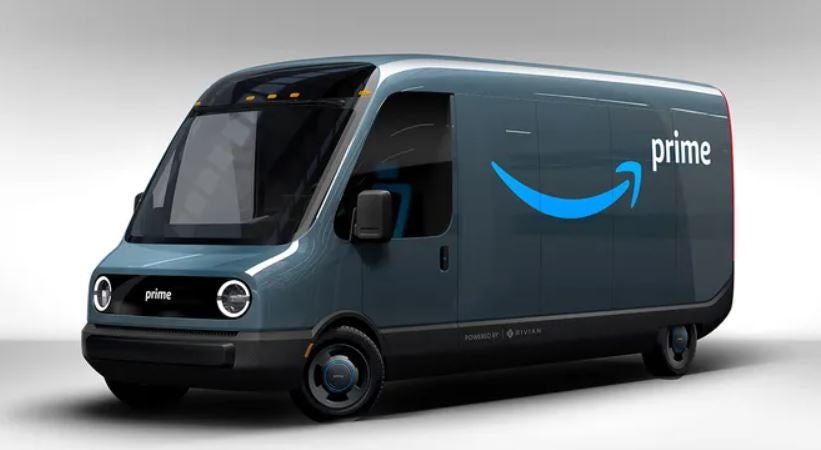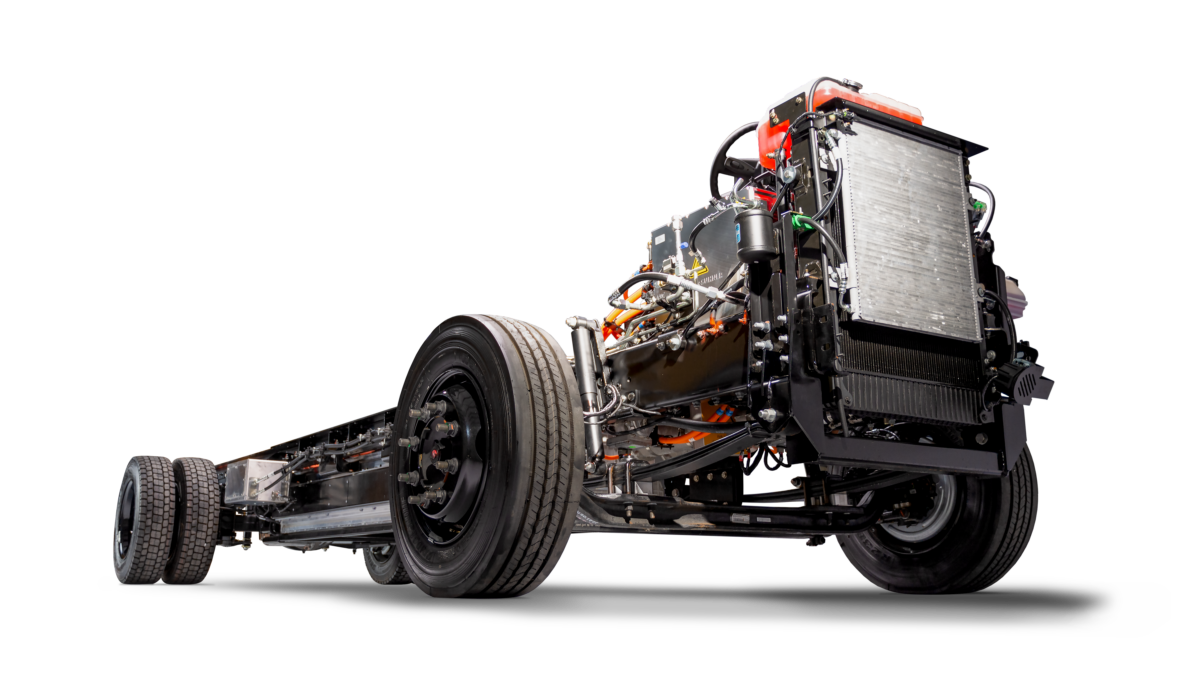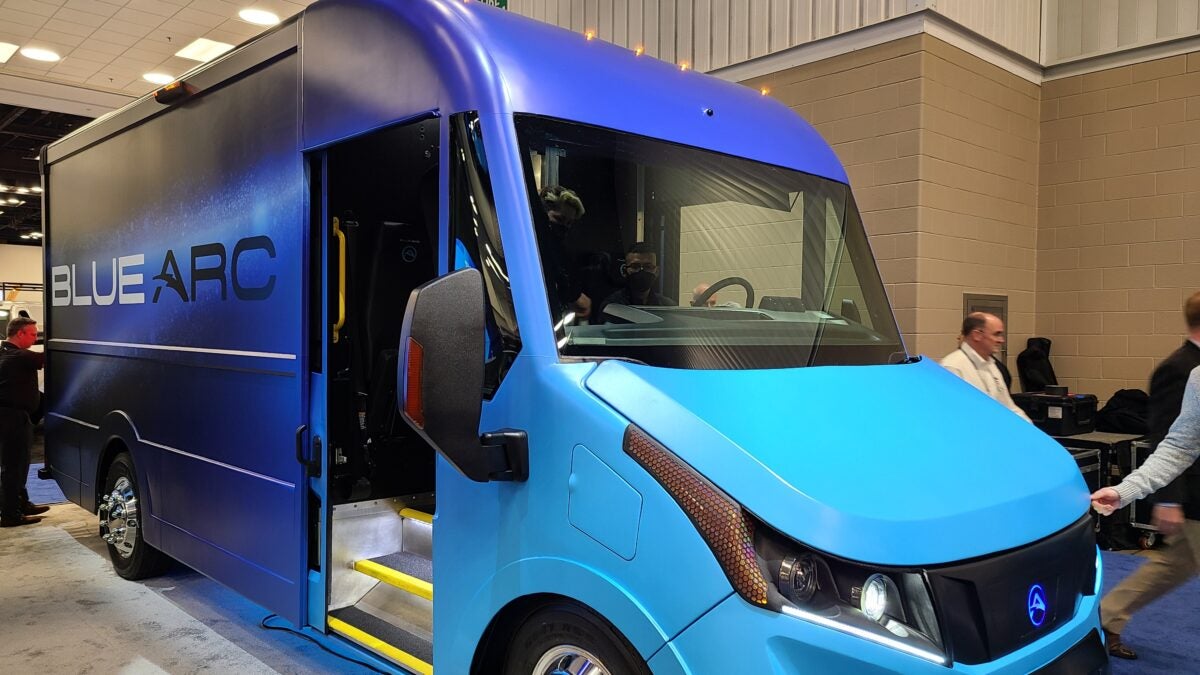Editor’s note: Adds Ford testing comment
Freightliner Custom Chassis Corp. can deliver a medium-duty gasoline- or diesel-powered truck by the end of the summer — far faster than the supply chain crisis pushing most new truck orders out a year or more.
It is making Class 4-6 delivery vehicles appealing to fleets as an option for those holding out to replace their older Class 8 trucks capable of hauling a 48- or 53-foot trailer and more than 33,000 pounds. Class 4 and 5 trucks carry 14,001 to 19,500 pounds. Class 6 can carry 26,000 pounds
Vans typically cost less than half of a Class 8 tractor depending on size and power source, typically gasoline, natural gas or diesel with battery-electric powertrains growing rapidly.
As service businesses like restaurants suffered during the pandemic, the blistering pace of consumer goods orders — everything from sweat pants to exercise bicycles — drove last-mile and pickup and delivery to new heights and spawned dozens of new entries.
Seeing consumer spending on the rise, Amazon Inc. in 2019 ordered 100,000 battery-electric vans from startup Rivian, 10,000 of which are due for delivery this year. Amazon is covering its bet on Rivian — it owns 20% of the company — by ordering Ram ProMaster vans from Stellantis.

As last-mile delivery demand has grown, goods distribution often follows a hub-and-spoke model where larger trucks drop trailers that are emptied and loaded on smaller trucks and vans from FedEx, UPS, DHL, the U.S. Postal Service and, of course, Amazon.
Depending on what they are hauling — for example, boxes of potato chips — vans can fill up, or cube out, long before they reach their rated weight capacity.
The Freightliner name
FCCC, part of Daimler Truck North America since its purchase from Oshkosh Truck Corp. in 1995, is a manufacturing co-equal, albeit much smaller, than the Class 8 market-leading Freightliner. The sibling leverages the Freightliner dealership and service network.
Based in Gaffney, South Carolina, FCCC builds the underpinnings of medium-duty trucks and works with body builders like Morgan Olson and Utilimaster to create complete trucks that sit alongside Freightliner offerings like the Cascadia and M2 at more than 400 of Freightliner’s 692 retail outlets.
“We share the same dealers,” said Greg Baker, FCCC commercial chassis product manager. “So the dealer network is selling Cascadias all the way to our walk-in vans.”
Sudden appeal
In an ongoing supply chain crisis, exacerbated by Russia’s invasion of Ukraine, fleets are going to great lengths to get vehicles, even trucks on which they previously may have passed.
“Some of our Freightliner dealerships that have never considered a walk-in van are like, ‘Yeah, I can get a few of these and play with them,’” Baker said. “There are some big Freightliner dealers that are buying them for themselves” as an alternative for customers enduring stretched-out production of bigger trucks, which have lead times of a year or longer..

A diesel-powered chassis with a body takes about four months, and a gasoline-powered chassis takes as little as two-and-a-half months. Bodybuilders need four to eight weeks of that to add a box or cube to the chassis for uses such as bakery or uniform delivery.
FCCC is able to negotiate agreements and direct shipments because of Daimler’s purchasing heft. Semiconductors, the tip of the spear in supply disruptions, are just as much of an issue for FCCC as for Freightliner’s Class 6 and 8 tractors. But suppliers pay attention to big customers. And FCCC benefits.
“Have we hit 100% that we wanted to?” Baker asked. “No. But have we hit 0%? No.”
The supply chain, especially when it comes to commodities like rubber and aluminum, is more of an annoyance than a crisis.
“The commodity picture is tough for us, just like any other company out there producing stuff,” Baker said. “Everyone’s facing it. And we’re having to face the same thing.”
The main competition
Ford Motor Co.’s Pro division is FCCC’s major competitor. It offers stripped chassis for body builders and upfitters across two versions, one that works for vans, shuttle buses and limousines and another targeted at Class A motorhomes. Ford has the dealer, service and finance network that Daimler offers.
The F-59 commercial chassis is based on the Ford F-Series Super Duty truck lineup. It is used by commercial walk-in van customers for applications that include parcel delivery, bread/snack delivery, utility company operations and mobile machine shops.
The greatest difference FCCC claims is that Ford products are automotive versus commercial grade.
It is a contention that Paccar Inc.’s Kenworth division made when it introduced new versions of its medium-duty trucks a year ago. Depending on how it is used, commercial grade components can be more durable for longer than automotive grade.
“While I don’t have any specific data on the durability of Ford medium-duty chassis relative to competitors, those chassis are specifically designed and don’t share any major components with light-duty trucks,” said Sam Abuelsamid, principal analyst for Guidehouse Insights.
At the Ford Michigan proving grounds, robots repeatedly drive over a continuous series of man-made potholed and grooved roads at the Silver Creek test course. which includes a dozen types of metal-edged chuckholes repeated for almost a quarter mile. Fully loaded to the maximum payload, Ford trucks run the course hundreds of times along with extreme inclines, high-speed ovals, and water intrusion.
The upstarts
In addition to Ford, FCCC faces a plethora of new competition, especially in electrified chassis.
At the recent Work Truck Show in Indianapolis, FCCC displayed its MT50e chassis, with a Proterra Inc. battery pack and e-axle from Dana Inc. The van body was manufactured by the Shyft Group’s Utilimaster brand. Coincidentally, Shyft vied for attention with its own Class 3 Blue Arc delivery van, for which Proterra said Tuesday it will supply the battery packs.

General Motors Co.’s new BrightDrop subsidiary is also building electric vans with skateboard chassis. Workhorse Group, formerly part of Navistar, started with GM’s P-chassis for motor homes and commercial trucks in the late 1990s. The company is planning Class 5 and 6 vans for 2023 on a new platform to compete with FCCC and Ford.
Lightning eMotors is planning to build an electric chassis with Mexico’s Metalsa for Class 4 and 5. Motiv Power Systems has been electrifying the Ford F-59 chassis since 2019. Electric pickup startup Bollinger Motors postponed its original product to focus on the electric chassis for Class 3-6 fleets.
Asset-light startup REE Automotive has signed up several customers, including Toyota subsidiary Hino Trucks, for its electric skateboard chassis that features motors and power electronics at the four wheels. Xos Trucks and Via Motors are also in the mix.
The boom has even spawned an electric-specific body builder. J.B. Poindexter, the parent of Morgan Olson, envisions its new EAVX unit founded in 2021 creating the top hats for all manner of electric chassis.
While FCCC and Ford offer dealership, service and financial services, startups generally do not.
“There’s a lot of new up-and-comers in this specific segment that we’re keeping an eye on,” Baker said. “There’s been a lot of people who have wanted to jump to an ideal without a path, and they just crash and burn and lose a lot of momentum.”
Antti Lindstrom, a trucking analyst for S&P Global Mobility, who walked the floor at the Work Truck Show and examined the proposed medium-duty offerings, sees a shakeout coming through consolidation.
“The math would tell you there’s only so many ways you can slice the cake,” he said. “How small can the runs be for a company to stay in business? There’s going to be a lot of disappointed folks next year that will not be in this business anymore because they just can’t find their niche. They’re not all going to make it. I just can’t name names.”
Related articles:
Truck Tech: Workin’ for a livin’ edition
Workhorse will build no trucks in 1H22 amid reset to new platforms
Merchants Fleet’s $2B EV makeover continues with order for Xos step vans







